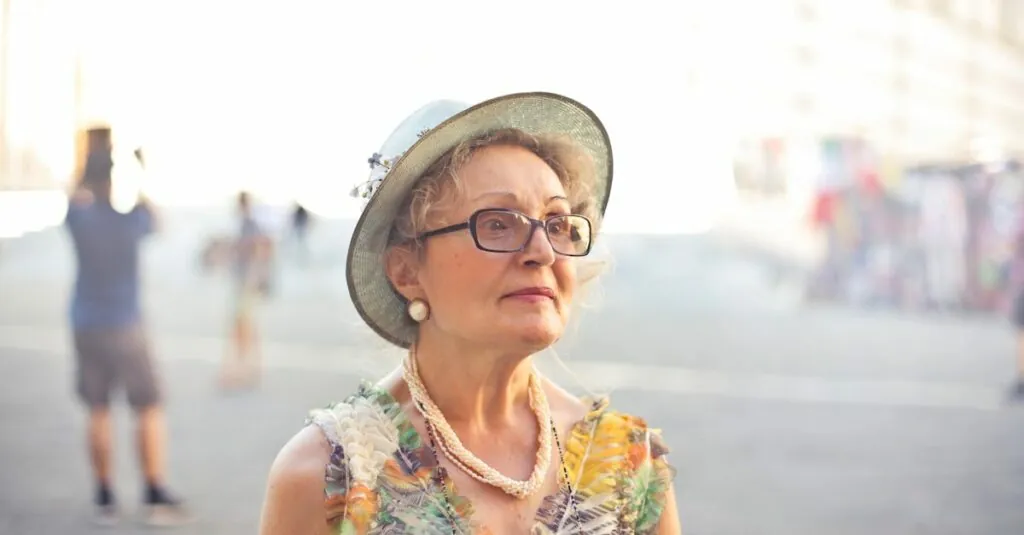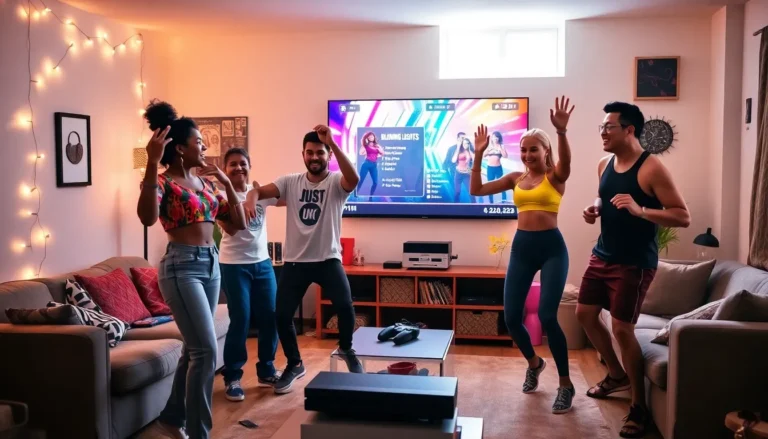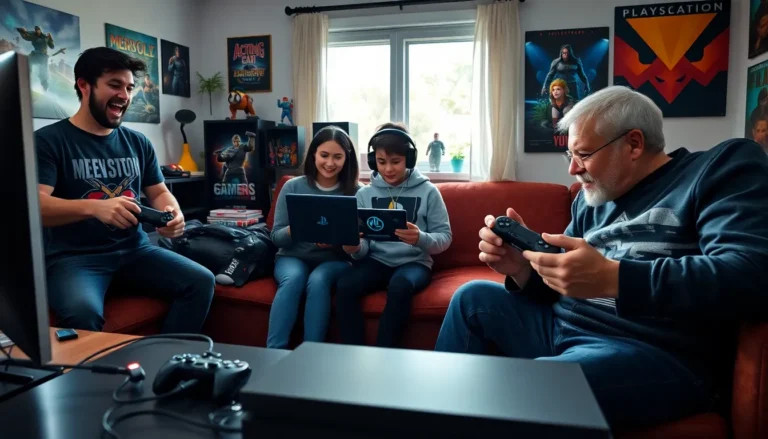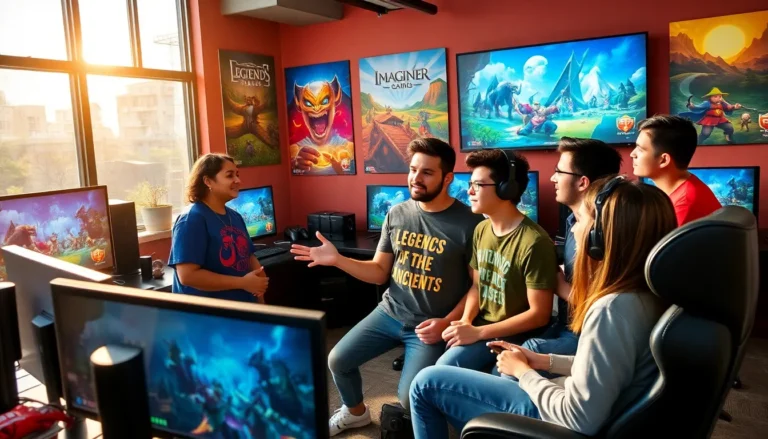Table of Contents
ToggleRoblox has come a long way since its early days, transforming from a pixelated playground into a vibrant universe of creativity. But what did old Roblox really look like? Picture a world where blocky avatars roamed through simple, unpolished landscapes, and the graphics could make even a retro gamer do a double-take.
Overview of Old Roblox
Old Roblox featured basic, blocky avatars with limited customization options. Players used simple geometric shapes for building, giving games a rudimentary feel. The graphics showcased minimal textures, often appearing pixelated. Uniform environments dominated the landscape, lacking the intricate designs found in later versions.
Customization options remained scarce in early years. Users experienced only a handful of clothing items, making unique player identities challenging. Basic animations and limited interactivity characterized the gaming experience. Frustration set in when players tried to create complex games using muddled tools and a lack of resources.
Roblox’s early design emphasized creativity, even with constraints. Platforms allowed players to experiment, encouraging ingenuity despite graphical limitations. Friends could join each other’s games, fostering community among users. Social interactions often revolved around finding and sharing experiences within a basic framework.
Building tools required time to master, leading to a learning curve for many. Player engagement often stemmed from collaborating with friends, exploring user-generated worlds. Competition among creators encouraged innovative solutions within a limited environment.
The vibrant updates and enhancements came later, transforming the platform significantly. Limited features in old Roblox served as a foundation for future advancements. Players often look back on these early experiences with nostalgia, recognizing their role in shaping the platform that thrives today.
Early Days of Roblox
Roblox’s early days showcased a simple platform, highlighting blocky avatars and limited graphical fidelity. Users experienced a minimalistic interface that laid the groundwork for creativity and community.
The Original Interface
The original Roblox interface featured basic navigation and simple construction tools. Users accessed games through a straightforward menu displaying titles and descriptions. Layout simplicity made it easy for newcomers to jump in, despite limited customization options. Game developers relied on rudimentary models, which dictated how experiences were built. Textures often appeared flat, focusing more on functionality than aesthetic appeal. The lack of 3D effects and elaborate graphics contributed to a unique charm, allowing players to envision endless potential for creation.
Iconic Games from the Past
Several iconic games marked Roblox’s early catalog, shaping player experiences. “Brookhaven” and “Jailbreak” stood out, engaging users through immersive, albeit simplistic environments. Developers created unique gameplay styles, often utilizing basic scripts to introduce interactive elements. In these games, players ventured through open worlds, allowing them to socialize while exploring. Popular experiences like “Natural Disaster Survival” encouraged teamwork and quick thinking, despite graphic limitations. Players formed lasting memories in these foundational games, inspiring future developers to innovate within the platform.
Visual Changes Over the Years
Roblox experienced significant visual changes since its inception. The platform evolved from basic, pixelated graphics to a more sophisticated visual style.
Graphic Enhancements
Graphical enhancements transformed the appearance of avatars and environments. Players now enjoy detailed textures and vibrant colors, reflecting a broader range of artistic expression. The introduction of 3D modeling allowed for more complex and immersive worlds. Original blocky designs gave way to refined character animations. Further, lighting effects and shadow enhancements improved realism across games. New tools expanded creation possibilities for developers. As a result, users recognize and appreciate the enhanced aesthetic quality. This evolution enhances gameplay experiences, attracting a growing audience.
User-Generated Content
User-generated content played a pivotal role in the platform’s visual transformation. Early creation tools limited developers; however, advancements provided greater flexibility. Gamers now upload custom assets, which enrich environments and gameplay. The ability to create personalized avatars expanded player identity. Players actively engage in building unique worlds through various assets. Collaborative efforts among users foster a dynamic creative community. Improved scripting languages facilitate intricate gameplay mechanics. Engaging user-generated content solidifies Roblox as a creative hub. This collaborative approach promotes continuous improvement in visual quality.
Cultural Impact of Old Roblox
Old Roblox left a lasting cultural imprint on the gaming landscape. Iconic avatars and straightforward designs fostered creativity and collaboration among players. Communities thrived, with friends strategizing together within limited worlds, forming bonds through shared experiences in games like “Jailbreak” or “Natural Disaster Survival.”
Players utilized basic building tools to create unique game experiences, despite their simplicity. These early experiences sparked innovative ideas that continue to influence new game developers today. The accessibility of the platform catered to diverse audiences, enabling young creators to experiment with ideas and express individuality.
Chats and social features shaped relationships, encouraging players to connect beyond gameplay. Roblox acted as a digital playground where kids built friendships, shared stories, and exchanged gameplay strategies. This social aspect remains a hallmark of the platform, attracting millions to engage creatively.
Old Roblox also impacted game design methodologies significantly. Pioneers learned valuable skills in game creation, community management, and user interaction. These foundational lessons equipped players with practical knowledge applicable in professional environments. Developers credit their early experiences in Roblox as catalysts for their careers.
Memorable games laid the groundwork for modern Roblox, bridging the gap between simple gameplay and complex mechanics. The design limitations prompted creativity, igniting a passion for game development that transcended the platform. Previous designs instilled a sense of nostalgia while reinforcing the idea that innovation flourished in constraints.
Overall, old Roblox ignited a generation’s interest in gaming, shaping future contributions to the industry and the broader culture of online interaction.
Nostalgia and Community
Old Roblox fostered a sense of connection through its simplistic designs and limited graphics. Blocky avatars allowed players to focus on creativity rather than appearance, promoting imagination in game creation. Communities emerged as friends collaborated within basic environments, leading to lasting friendships forged through shared gaming experiences.
Players often reminisced about iconic games like “Brookhaven,” “Jailbreak,” and “Natural Disaster Survival.” These titles encouraged teamwork, making gameplay an enjoyable social event. Engaging with others, players strategized together, creating bonds that transcended the virtual space.
Social features played a crucial role in enhancing player interaction. Chat functions and group creation made it easy for users to connect, share ideas, and work on projects collaboratively. The accessibility of Roblox opened its doors to a diverse audience, allowing individuals to explore their creative potential without barriers.
Understanding game design became an informal education for many. Skills acquired during gameplay often translated into real-world applications, inspiring future careers in game development and community management. Players learned the importance of collaboration, problem-solving, and innovation.
Nostalgia for old Roblox continues to shape community interactions. Established friendships and shared memories give rise to a unique culture that values creativity and collaboration. While graphics have evolved, the spirit of creativity and community remains a staple of Roblox, strengthening its connection among players across generations.
Old Roblox may have been marked by its simplistic graphics and blocky avatars but it laid the foundation for a vibrant community that thrives on creativity. The platform’s early limitations inspired players to innovate and collaborate in ways that shaped their gaming experiences.
As nostalgia for this era continues to resonate, it’s clear that the spirit of old Roblox lives on. The connections formed and the skills developed during those formative years have left an indelible mark on players. Today’s Roblox still reflects that essence of creativity and community, proving that while visuals may change, the heart of the platform remains steadfast.




